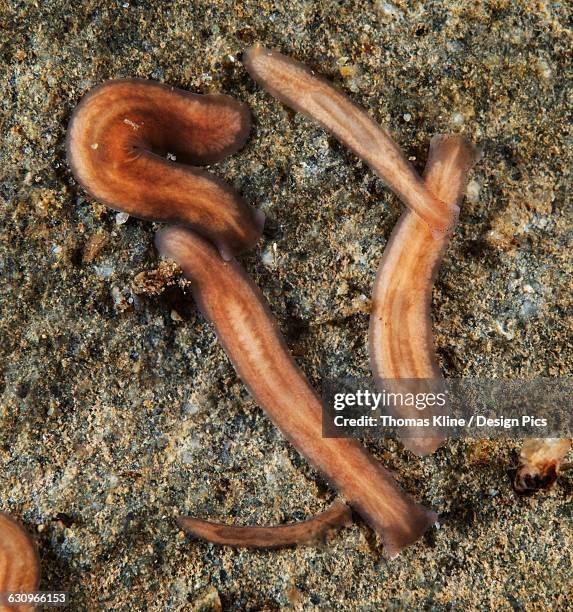
Planaria are fascinating creatures that belong to the phylum Platyhelminthes. At first glance, they might look like just another worm, but there’s so much more to them. Think of them as the janitors of the natural world. They help clean up debris and organic matter, contributing to nutrient cycling in their habitats. Let’s dive into what makes planaria special and explore their roles in both soil and aquatic ecosystems.
What Are Planaria?
Planaria are a type of flatworm known for their distinct, elongated bodies. They can be found in freshwater, saltwater, and even damp terrestrial environments. One of the most interesting things about them is their regenerative abilities. If you were to cut a planarian in half, each half could regenerate into a complete worm. It’s like a real-life superhero ability!
These creatures have a simple body structure. They are usually a few centimeters long, with a head that can be recognized by its two eye spots. Planaria primarily feed on small organic matter, like decaying leaves and microorganisms. This makes them essential players in breaking down materials and recycling nutrients back into the ecosystem.
Planaria’s Role in Aquatic Ecosystems
In aquatic ecosystems, planaria contribute significantly as scavengers. They thrive in ponds, marshes, and quiet streams where they play a critical role in the food web. You might be wondering how they fit into this intricate puzzle.
1. Nutrient Recycling: Planaria help break down dead plants and animals, returning nutrients to the water. This process is crucial for maintaining water quality and provides food for other organisms.
2. Food Source: They also serve as a food source for various fish and invertebrates. It’s a classic case of “one creature’s trash is another creature’s treasure.” As planaria break down material, they become a tasty snack for other aquatic life.
3. Indicator Species: Because they are sensitive to changes in their environment, planaria can act as *indicator species*. If their populations decline, it may signal that something is amiss in the ecosystem, like pollution or habitat loss.
Planaria in Soil Ecosystems
Now, let’s shift gears and talk about planaria’s role in soil ecosystems. Just as they work in water, these flatworms also help keep soil healthy. Here’s how:
1. Organic Matter Decomposition: Planaria feed on decomposing organic matter in the soil, which aids in breaking down materials faster. This process enriches the soil, making it more fertile for plants.
2. Soil Aeration: As planaria move through the soil, they create tiny tunnels. This aeration improves soil structure, allowing water and nutrients to penetrate deeper and reach plant roots more effectively.
3. Microbial Interaction: By interacting with soil microbes, planaria help enhance the microbial community. This relationship promotes a healthy ecosystem that benefits plants and other organisms residing in the soil.
Planaria and Soil Health
So, why does healthy soil matter? It’s the foundation for all terrestrial life. When planaria contribute to soil health, they indirectly support everything from crop production to the growth of native plants. A few benefits of planaria in soil health include:
– Enhanced Nutrient Availability: Healthy soil leads to better nutrient uptake by plants. This means crops can grow stronger and help feed us all.
– Disease Suppression: A balanced soil ecosystem can suppress plant diseases, reducing the need for chemical interventions. This is key for sustainable agriculture.
– Biodiversity Support: Healthy soil fosters diverse plant and animal life, contributing to biodiversity. The more diverse an ecosystem, the more resilient it becomes against changing conditions.
Planaria Behavior and Adaptations
You might find it interesting to know that planaria have some unique behaviors and adaptations that help them thrive in their environments. Here are a few:
1. Tactile Sensitivity: Planaria have a keen sense of touch. They rely on their skin cells to detect environmental changes. This ability helps them navigate and find food sources effectively in both soil and aquatic environments.
2. Light Sensitivity: While they don’t have eyes in the traditional sense, planaria can detect light and dark. This helps them avoid predators and find suitable habitats.
3. Regeneration: As mentioned earlier, planaria can regenerate lost body parts. This adaptation increases their survival chances, allowing them to recover from injuries that might be fatal to other organisms.
How Planaria Affect Other Organisms
Planaria are part of a larger web of life. Their presence or absence can greatly affect the organisms around them. Here’s how they influence their ecosystems:
– Competition and Predation: Their role as both predators and prey creates a balanced food web. When their populations are healthy, they help stabilize the ecosystem.
– Microbial Dynamics: By feeding on organic matter and interacting with bacteria, planaria influence the microbial community. They can help control microbial populations, ensuring that beneficial species thrive.
– Impact on Fish Populations: In aquatic ecosystems, the health of planaria populations can affect fish populations, as many fish rely on them as a food source. If planaria decline, the effects can ripple throughout the food web.
In summary, planaria might be small, but their role in both soil and aquatic ecosystems is immense. From nutrient recycling in water to enhancing soil health, these flatworms are truly the unsung heroes of the natural world.
Understanding the contributions of planaria can help us appreciate the complex interactions that sustain life. As we work towards protecting and conserving our ecological systems, let’s not overlook these tiny creatures working tirelessly behind the scenes. They remind us that every part of an ecosystem, no matter how small, has a vital role to play in maintaining balance. So next time you spot a planarian, think of all the hard work they’re doing. They may not wear capes, but in their way, they’re preserving our planet.

